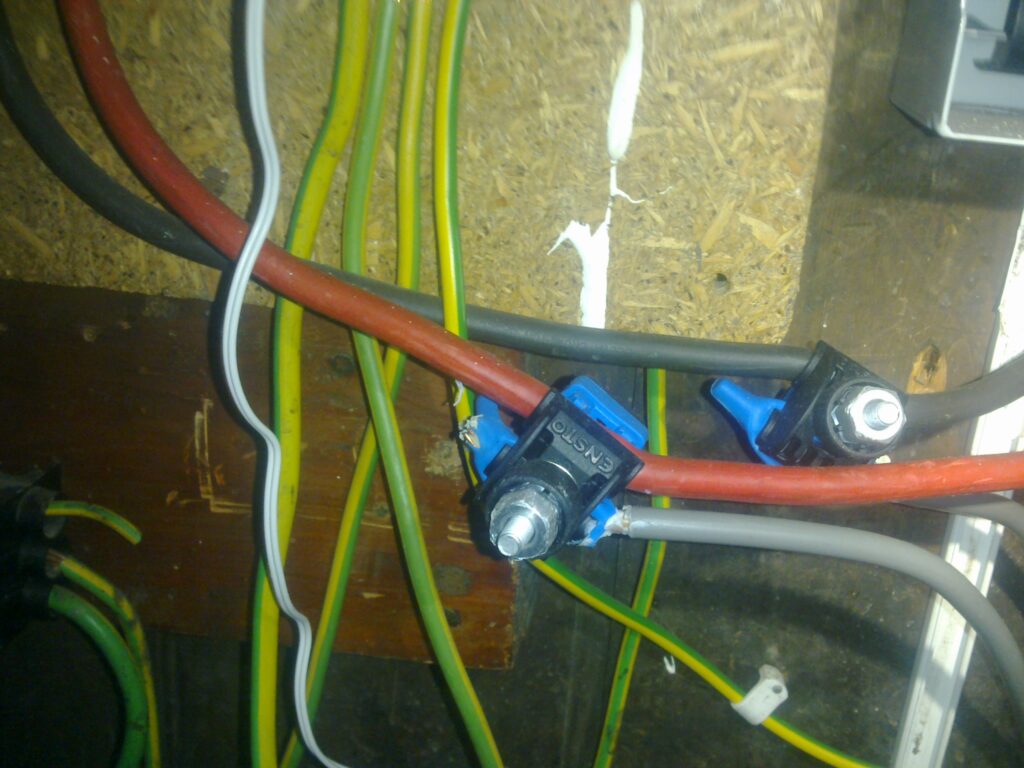
Need help with cracking those EICR codes? The technical team at NAPIT, with the help of the 18th Edition Codebreakers publication, answer your latest coding queries. Click on the photos for a closer look!
ADAM LUBKOWSKI: THIS WAS CARRIED OUT BY A SOLAR SPECIALIST COMPANY IN A CUPBOARD THAT WAS VERY MUCH IN USE AND FULL OF BROOMS, HOOVERS AND OTHER STUFF. NOTICE THE BARE COPPER POKING OUT OF THE LINE TAIL…
Unfortunately, we see these used quite frequently these days. They’re often used instead of Henley blocks or similar termination points to split meter tails for numerous reasons. Correctly named ‘Insulation Piercing Connectors’ or ‘Line Taps’, they’re designed to be used where they’re at height and out of reach.
Although there are many different manufacturers of this type of connector, this manufacturer states clearly that they’re to be used for specific overhead LV cables and should also be used in conjunction with cable support equipment to reduce mechanical stress. The requirements and protective measures that can be used on overhead lines and taking advantage of out-of-reach caveats differ greatly from those that can be used where terminations can be readily accessed. Placed out of reach is a protective measure that skilled persons must control or supervise.
Before we consider that this equipment is not being used as its manufacturer envisaged, we need to understand that its improper fitting has left access to live parts, which is an immediate danger. Anyone in contact with this – the client or future engineers – could receive a fatal shock.
Secondly, we need to look at the need for any terminations in a cable to be supported and taken into an adequate enclosure. Understandably taking into an adequate enclosure may not be where this equipment was designed for, as this may not be possible when dealing with overhead lines, however. In this case, they’re not being used as the manufacturer designed them for, and so must be taken into an adequate enclosure.
Order your copy of NAPIT Codebreakers here









